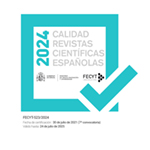El color en los códices prehispánicos del México Central: identificación material, cualidad plástica y valor estético
Resumen
Este artículo investiga algunos de los valores plásticos y estéticos que presidieron la selección y la preparación de las materias colorantes empleadas para iluminar los códices creados por los nahuas del México Central durante el Posclásico Tardío. Estos códices son interesantes porque análisis arqueométricos y exámenes codicológicos recientes han permitido conocer la materialidad de su capa pictórica, así como las características formales y el comportamiento de los colores en estas obras. Uno de los aportes trascendentales de estos estudios ha sido averiguar que la paleta cromática que sirvió para pintar los códices del México Central era principalmente de origen orgánico, lo que contrasta con la naturaleza de los pigmentos detectados en restos de pintura mural y en esculturas creadas por los nahuas que son sobre todo minerales. El objetivo de este artículo es reflexionar sobre las razones de esas diferencias y demostrar que el uso de los colorantes orgánicos en los códices respondía a un fin plástico específico que concordaba con el canon estético imperante en la sociedad náhuatl.Descargas
Descarga artículo
Licencia
La Revista Española de Antropología Americana, para fomentar el intercambio global del conocimiento, facilita el acceso sin restricciones a sus contenidos desde el momento de su publicación en la presente edición electrónica, y por eso es una revista de acceso abierto. Los originales publicados en esta revista son propiedad de la Universidad Complutense de Madrid y es obligatorio citar su procedencia en cualquier reproducción total o parcial. Todos los contenidos se distribuyen bajo una licencia de uso y distribución Creative Commons Reconocimiento 4.0 (CC BY 4.0). Esta circunstancia ha de hacerse constar expresamente de esta forma cuando sea necesario. Puede consultar la versión informativa y el texto legal de la licencia.









